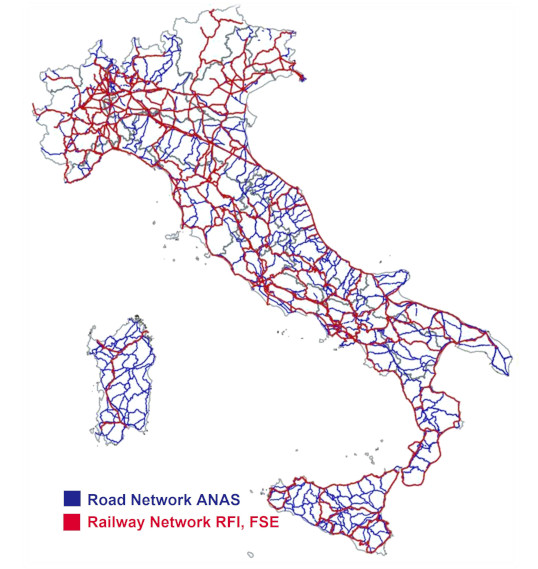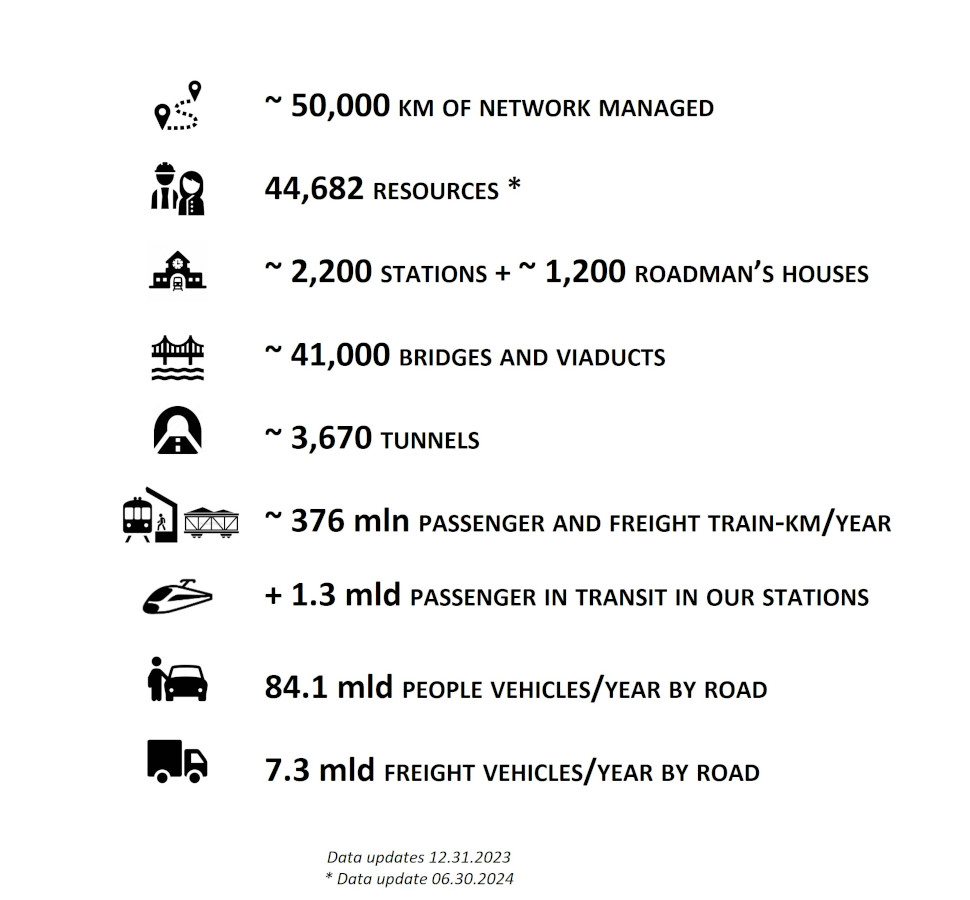The Infrastructure Hub in numbers


Transport infrastructure is the backbone for the economic and social development of the territory, influencing its productivity, facilitating trade with other areas and markets, along with improving economic inclusion and social cohesion.
With the new Business Plan, the FS Group confirms that it is continuously on the move and is even more at the heart of the mobility ecosystem, thanks to an integrated system of various infrastructure and transport modes that will create value for the country.
Within this context, the Infrastructure Hub – with RFI as parent company and comprising Anas, Italferr and Ferrovie del Sud-Est – can play a key role by working synergistically for the realisation of accessible, integrated, resilient, interconnected and dialoguing road and rail works, also thanks to digital transformation, together with the integration of engineering services to accelerate investments.


The Hub’s vision broken down into six strategic objectives
The inclusion of RFI and Anas in the same Hub aims to maximise industrial synergies to:
The rail-road synergy shall render it possible to integrate some 50,000 kilometres of arterial roads between railway lines, highways and motorways, which accommodate over 9,000 trains and 7.4 million vehicles per day.
The objectives are ambitious and aim to upgrade and integrate the rail and road networks, making them both more modern, resilient, interconnected and accessible to all. This synergy must be present in the planning phase of the works, defining and specialising the roles of the different infrastructures, also in the design, technological development and maintenance. The connection between the two serves to bring Italy closer, cutting travel time between the main cities and reaching all urban centres throughout the country in a capillary manner.
For the Infrastructure Hub as a whole, some 160 billion euro in investments has been earmarked and specifically:
The four companies of the Infrastructure Hub